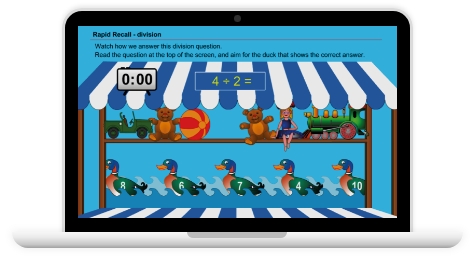
Chris Edwards – Headteacher
Case Study
With only 77 pupils, we are the smallest primary school in Norfolk not attached to another school. We offer a nurturing and supportive environment, but we also always aim to find new ways to improve results. Five or six years ago, we were looking to support our less able students in maths, and our educational psychologist for Norfolk suggested a virtual
tutor could be helpful.
We’ve found since implementing Maths-Whizz, that our pupils have become better mathematicians because it enables them to practice what we teach in lessons. It’s tailored to the needs of each child, and pitches work at the right level. It’s also visual and appealing, providing structure balanced according to need. For other schools considering implementing similar EdTech, I would offer the following nuggets of advice:
Buy into the solution
Any EdTech is a significant investment, especially for a small school like ours, so don’t buy into it and think it will run itself. Teaching staff all need to be trained and to get on board to use it wholeheartedly. They need to follow up on work, check and monitor usage and progress regularly. This takes time to become a habit, but once systems are in place, it can become light touch and has many advantages. For example, if homework is set to make four progressions in a week, it takes seconds to check on-screen this has been completed. It’s a smart way of working as there is no marking that takes the burden away from busy teachers.

Engagement
We encourage our children to access Maths-Whizz at home to achieve progressions, so getting parental engagement has been key. We ran a maths session after school and invited parents to come along and see how they can help their children by ensuring they have regular access to the tutor. However, further work always needs to be done to ensure hard to reach parents are involved as much as possible too.
Don’t let the novelty Wear Off
With any new implementation, there is a risk the novelty will wear off. Therefore, set expectations about usage, so it needs to be completed like any other homework task. We rigorously follow up to ensure pupils have attained their ‘four progressions per week’. If not, then they need to use break times to achieve this. We feel if you are honest and open with children and explain how the solution can help them better access the curriculum, then they respond to that. They can see the point of what they are doing.
Don’t let the novelty Wear Off
We have found that the ability gap tends to spread wider the older children get. Maths-Whizz is highly effective at finding the right level to tailor progress matched to a child’s ability and pace of learning. However, for more able students, it’s important to recognise they need to learn the content of a maths lesson in school before practising on Maths-Whizz at the higher levels; otherwise, they can struggle with understanding. In this way, a virtual tutor doesn’t replace face-to-face lessons but best augments learning that has already taken place. There is no marking for
teachers, and the homework also provides ongoing formative assessment for the staff without it taking up any of their time.
Build Confidence
Children (and some adults!) often have a bit of a confidence issue with Maths. However, the more practice they get, the more confident they become. Maths-Whizz offers exposure to things like repetitive counting games, adding and subtraction problems and provides over-learning. It means skills developed in class can be applied on the virtual tutor. It also shows different ways of tackling the same problems and helps to apply learning moving forwards.

To gain these benefits, we find encouragement is really important. Positive feedback from both teachers and parents to ensure pupils practice their maths on the tutor is key as we know it helps build confidence.
